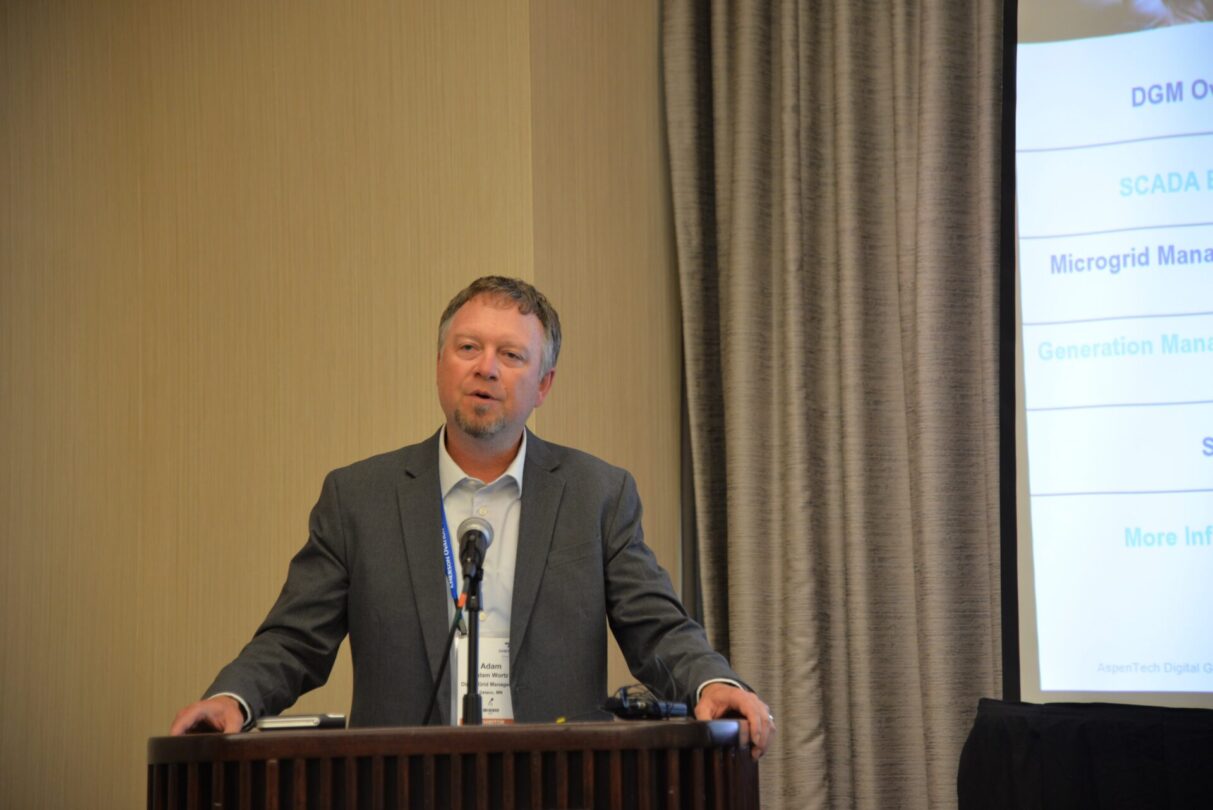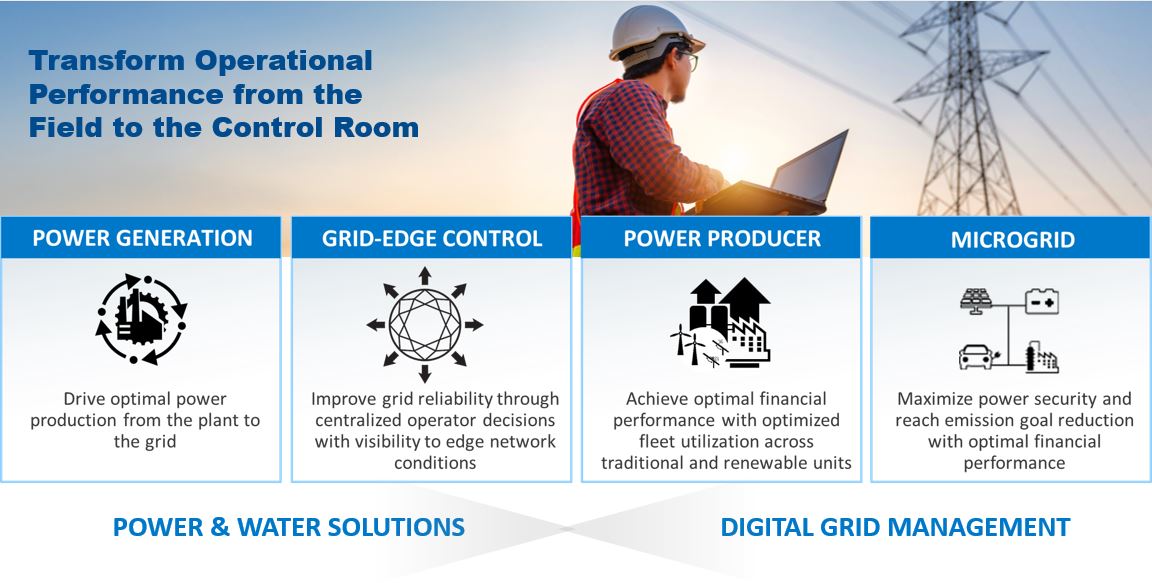
One of the most prominent topics of discussion at the Ovation™ Users’ Group Conference 2025 has been the increasing challenges the grid faces as electrification continues to expand across the globe. In his presentation on Tuesday, Adam Wortz dug into the details to help attendees see exactly why this is happening.
The grid, Adam explained, will both grow in electricity generation and increase in size dramatically in the next 25 years. Simultaneously, it will need to increase the share of renewable generation and navigate an increasingly challenging environment of natural disasters and cyber threats.
“The demand and the need for generation continue to grow. The attention we get from a cybersecurity perspective and the continual motion to defend against those attacks continue to grow leaps and bounds every year. We’re all aware of the workforce challenges we have in the industry.”
Put simply, the road ahead has the potential to be a bumpy one. The power and utilities value chain will need to adapt to this new normal.
“The definitions are changing. When we talk about a generation utility, traditionally those were large utilities owning traditional assets and generation types. That has been changing.”
Choosing the right platform
Utilities and power producers looking to navigate the coming changes to the grid will need a roadmap. Emerson, Adam shared, provides that roadmap via its AspenTech Digital Grid Management (DGM) integrated enterprise solution portfolio. DGM provides purpose-built control applications collected into a flexible platform that users can customize to meet their specific needs.
Built on the OSI monarch™ Core Platform, DGM helps organizations achieve optimal financial performance and streamlined fleet utilization across both traditional and renewable units. It also provides the visibility and granularity to help teams maximize power security and reach emission goal reduction and optimal financial performance.
“The fundamental of the monarch platform is communicating to the end devices. Communicating to all the different RTUs and substations, plant controllers, DCS, Ovation, edge gateways—we’re bringing all of that data through monarch.”
The solution is high performance and high availability, supporting all types of redundancy. There are typically coordinated, backup data control centers so there is no downtime in the systems.
Improving the grid
Working together, the Ovation Automation Platform and DGM software are the perfect technology pair to optimize power generation from the plant all the way to the grid control. They provide a more intelligent, seamlessly integrated solution. They improve management not only for utilities, but also for the newer, non-utility players that are emerging into the industry.

In addition, the software is scalable, providing a wide range of benefits and proven security, from solutions like Emerson’s AspenTech OSI SCADA Express, which supports up to 30,000 points, to the biggest DGM solutions supporting millions of points.
Smaller grids mean more availability
One of the places where DGM will be most valuable is in microgrid controller management. A microgrid is a self-contained electricity network that can generate and store its own electricity on-site. This generation can come from renewable energy sources such as solar and wind and/or non-renewables such as hydrocarbon, coal, and nuclear.
“The amount of solar and renewables that have been added present significant challenges.”
The benefit of microgrids is that they improve a user’s ability to maintain 24×7 power availability and resilience to grid disturbances by creating independent “islands”. Typically, they provide energy to a specific geographic zone such as an industrial plant, airport, transit system, data center, military base, neighborhood, and more.
“In some cases, these microgrids are their own distribution utility. They have all of the makings of that in terms of the local distribution lines and network but also the local generation.”
To be as effective as possible, microgrid control systems need quality management, and that’s where Emerson’s AspenTech Microgrid Management System (MMS) comes in. MMS provides a proven, advanced solution for ensuring reliable power across microgrids. It provides the ability to integrate and manage renewables, perform flexible load balancing, and improve power reliability. MMS also integrates seamlessly into the Emerson technology stack as part of the DGM solution. Using DGM, teams can integrate MMS with local Ovation controls to create powerful and flexible control solutions.
Looking forward
Nobody can accurately predict exactly what the grid of the future will look like. However, we know for certain that managing increased demand in parallel with a need for more flexibility, sustainability, and availability will drive significant changes. Adopting a DGM platform supported by tools built on decades of energy industry expertise is a critical first step towards ensuring readiness for that future state, no matter what it may be.
